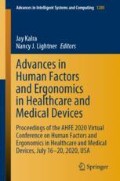Abstract
The recovery of the defects due to surgery incisions requires the use of prosthetic implants, which may cause various complications on the long term, such as: the rejection/infection of the used graft, the development of fistulas or the recurrence of hernias. The use of the surgical meshes made up of synthetic polymers demonstrated a significant reduction of the recurrence rate, the minimization of pain and the improvement of general post-surgery results. The textile structures of the synthetic polymers made up of PES, PA and PP for hernias were treated in plasma to boost their biocompatibility. A low-pressure plasma installation with the oxygen gas allows for the treatment of the textile materials in a cubic chamber of 40 cm side in a roll-to-roll system. The contact angle measurement was applied according to ASTM D7490-08 Standard, in order to identify any surface modifications following the plasma treatment, respectively their hydrophilic properties. All plasma treated structures were hydrophilic. A MTT assay, a LDH – quantification of dead cells and a FDA staining analysis were performed before and after the plasma treatment, in order to establish the biocompatibility of the hernia meshes. The quantitative and qualitative results of the biocompatibility tests highlighted that the plasma treated textile structures improved the level of biocompatibility, characterized by high levels of MTT and low levels of LDH (when compared to the test control – HCT8 cells). These results were confirmed by the microscopic analysis too – for the cells grown on these structures had a high density and an unaltered morphology.
Access this chapter
Tax calculation will be finalised at checkout
Purchases are for personal use only
References
Dabbas, N., Adams, K., Pearsn, K., Royle, G.: Frequency of abdominal wall hernias: is classical teaching out of date? JRSM Short Rep. 2(1), 1–6 (2011)
ASM International and Granta Design Limited (2007). Materials for Medical Devices Database (MMD) (2007). http://products.asminternational.org/meddev/index.aspx
Qin, Y.: Textiles for implants and regenerative medicine. In: Qin, Y. (ed.) Medical Textile Materials, pp. 133–143. Woodhead Publishing, Cambridge (2016)
Deeken, C.R., Lake, S.P.: Mechanical properties of the abdominal wall and biomaterials utilized for hernia repair. J. Mech. Behav. Biomed. Mater. 74, 411–427 (2017)
Kalaba, S., Gerhard, E., Winder, J.S., Pauli, E.M., Haluck, R.S., Yang, J.: Design strategies and applications of biomaterials and devices for Hernia repair. Bioact. Mater. 1(1), 2–17 (2016)
Liu, X., Chu, P.K., Ding, C.: Surface nano-functionalization of biomaterials. Mater. Sci. Eng.: R: Rep. 70(3–6), 275–302 (2010)
Malkan, S.R.: An overview of spun bonding and melt blowing technologies. Taapi J. 78, 185–190 (1995)
Author information
Authors and Affiliations
Corresponding author
Editor information
Editors and Affiliations
Rights and permissions
Copyright information
© 2020 The Editor(s) (if applicable) and The Author(s), under exclusive license to Springer Nature Switzerland AG
About this paper
Cite this paper
Visileanu, E., Scarlat, R., Mitu, B., Vladu, A. (2020). Plasma Treatments to Boost the Biocompatibility of the Textile Medical Devices. In: Kalra, J., Lightner, N. (eds) Advances in Human Factors and Ergonomics in Healthcare and Medical Devices. AHFE 2020. Advances in Intelligent Systems and Computing, vol 1205. Springer, Cham. https://doi.org/10.1007/978-3-030-50838-8_30
Download citation
DOI: https://doi.org/10.1007/978-3-030-50838-8_30
Published:
Publisher Name: Springer, Cham
Print ISBN: 978-3-030-50837-1
Online ISBN: 978-3-030-50838-8
eBook Packages: EngineeringEngineering (R0)

